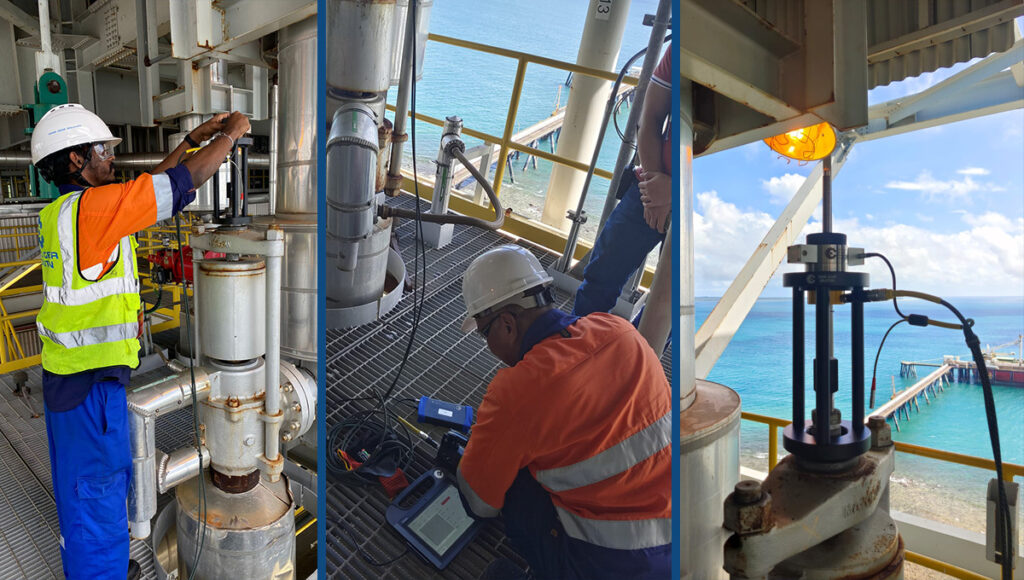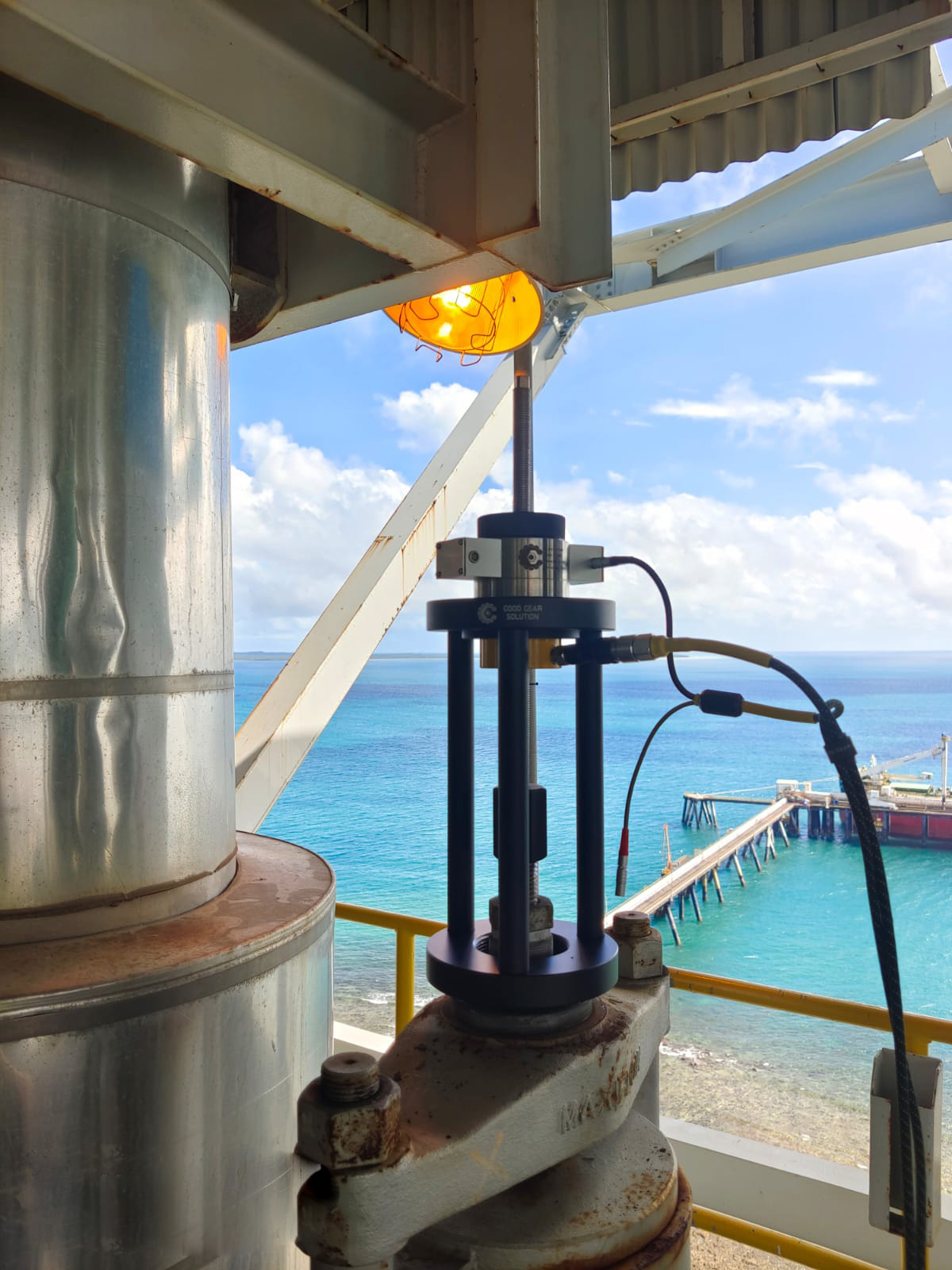Overview

Enhancing Safety Valve Testing with PioneerTEST Load Cells | GGS Philippines
The PioneerTEST yet again stuns us by showing its prowess in South East Asia. This time, it performed at one of Philippines’ largest electricity generating power plants. Generally speaking, larger power plants contain higher rated boilers, which means that its safety valves has relatively higher set pressures.
During operation, springs of safety valves are most elastic when the operating pressure is around 70-80% of the set pressure. Hence theoretically, a significantly higher lifting force would be needed. This force is necessary to accurately test safety valves in an almost cold state environment. For example, this occurs when the plant is shutting down.
Every GoodGear safety valve testing training trip will convey our professional perseverance in safety valve testing.
Learn more about Online PSV Tester.
Technical Specs
Safety Valve Pioneer Test
With Good Gear’s uniquely designed robust load cells, it was possible to test the safety valves of superheater outlets which was only 50% of the high set pressure of 30.3Mpa. Our Engineer, along with our counterpart in the Philippines tested a few valves of this capacity there.
The highly rated load cells that Good Gear provides you with would ensure that you need not fret about the line pressures, as we could still come up with the corresponding lifting forces to ensure that your safety valves are precisely and most importantly, accurately tested.
Learn more about Technical Specs.

Safety Valve Pioneer Test Instructions

Pressure safety valves (PSVs) play a crucial role in safeguarding industrial processes by relieving excess pressure to prevent equipment damage and ensure operational safety. Testing these valves is essential to ensure they function as intended. One innovative tool that contributes to the accuracy of this testing process is the Limit Force Device from PioneerTEST. In this article, we will explore how the Limit Force Device enhances accuracy in capturing precise set pressure, especially in scenarios where the safety valve undergoes simmering.
Understanding the Limit Force Device:
| The Limit Force Device enables a controlled opening of the safety valve, allowing for precise adjustments and capturing accurate set pressure readings. This controlled closure is particularly beneficial during simmering, where the valve opens only slightly. The device ensures that the valve is not fully popped up, enabling operators to observe and record the exact pressure at which simmering occurs. |
| During installation, the Limit Force Device can be adjusted to a minimum opening height. This feature is instrumental in facilitating accurate testing by providing a clear baseline for assessing the valve’s performance. It ensures that the valve’s movement, even during simmering, is within a controlled and measurable range. |
| The Limit Force Device contributes to preventing over-pressurization during testing. By allowing operators to fine-tune the closure of the safety valve, it minimizes the risk of inaccuracies associated with sudden and uncontrolled valve closures. This is crucial, especially when dealing with scenarios, where precision is paramount. |
Improved Accuracy during Simmering
Simmering, a phenomenon where a safety valve opens slightly to discharge only a small percentage of its rated capacity, poses a unique challenge during testing. Traditional testing methods may struggle to capture the precise set pressure during simmering, as the valve’s movement is minimal and subtle. This is where the Limit Force Device proves to be invaluable.
Understanding the Limit Force Device
The Limit Force Device is a key component in the PioneerTEST equipment designed for PSV testing. Its primary function is to provide a controlled means of closing the safety valve during the testing process. By tightening the two bolts of the Limit Force Device, operators can effectively close the safety valve in the event where the valve can not reseat due to corrosion.
